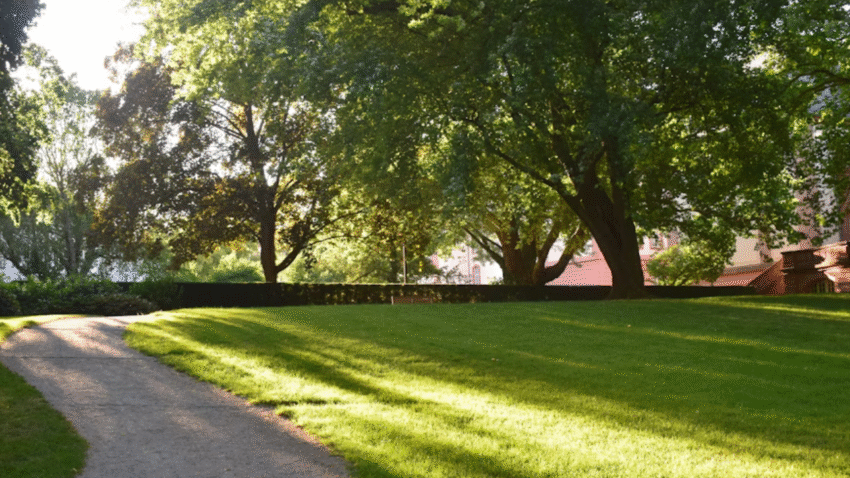Introduction
Tired of spending money on chemical fertilizers only to see patchy, weak grass that needs constant care? Learning how to fertilize your lawn naturally not only saves you money in the long run but also helps you build healthier soil, stronger turf, and a yard that’s safe for kids, pets, and the environment. This step-by-step guide will show you practical, eco-friendly methods to feed your lawn naturally for greener, thicker grass season after season.
Why Natural Fertilizing Matters for a Healthy Lawn
A naturally fertilized lawn depends on healthy soil full of beneficial microbes, earthworms, and organic matter. Instead of giving your grass a quick chemical boost that fades fast, natural fertilizing builds up your soil’s structure and nutrient balance over time.
Healthy soil absorbs water more efficiently, reducing runoff and erosion. It also encourages deeper grass roots, which means better drought tolerance and fewer weeds. Plus, a naturally nourished lawn is safer for people, pets, and local waterways since it won’t leach harsh chemicals into the ground.
Step-by-Step Guide to Fertilizing Your Lawn Naturally
Step 1: Test Your Soil First
Before adding any organic fertilizer, do a soil test to understand what your lawn needs. A simple soil test kit can measure pH levels and nutrient deficiencies like nitrogen, phosphorus, and potassium. Most lawns thrive with a pH between 6.0 and 7.0.
Step 2: Leave Grass Clippings on the Lawn
One of the easiest ways to feed your lawn naturally is by leaving grass clippings after mowing. Known as “grasscycling,” this process returns nitrogen and other nutrients to the soil, acting like a free, slow-release fertilizer. Use a mulching mower for best results.
Step 3: Apply Compost or Organic Matter
Top-dress your lawn with a thin layer (about ¼ inch) of compost once or twice a year, ideally in spring and fall. Rake it evenly over your lawn and water it in. Compost boosts soil structure, feeds beneficial microbes, and provides a balanced nutrient mix.
Step 4: Use Natural Lawn Fertilizers
Instead of synthetic options, choose organic fertilizers made from ingredients like:
- Composted manure: Cow, chicken, or horse manure that’s been properly aged.
- Bone meal: High in phosphorus, great for root development.
- Blood meal: A rich source of nitrogen.
- Fish emulsion: Liquid fertilizer that’s quick to absorb and good for a nutrient boost.
- Alfalfa meal or seaweed: Adds micronutrients and promotes microbial activity.
Follow package instructions and avoid overapplying—organic doesn’t mean you can’t burn your lawn.
Step 5: Aerate Your Lawn Annually
Healthy soil needs good airflow. Use a core aerator to remove small plugs of soil, which reduces compaction and helps water and nutrients penetrate deeper. Fall is the best time to aerate most lawns.
Step 6: Water Smartly to Activate Nutrients
Water deeply and infrequently to help nutrients move down into the root zone. Early morning watering is best to prevent evaporation and reduce disease risk.
Step 7: Use Organic Mulch Around Trees and Beds
If you have lawn areas near trees, garden beds, or pathways, apply organic mulch to maintain soil moisture and add nutrients as it breaks down. Keep mulch a few inches away from grass crowns to avoid rot.
Step 8: Grow Clover or Other Nitrogen-Fixers
Consider overseeding your lawn with microclover. Clover naturally fixes nitrogen from the air, feeding your grass and crowding out weeds. It also stays green during dry spells.
Common Mistakes to Avoid
Mistake #1: Overapplying Organic Fertilizers
Too much nitrogen can burn your grass or encourage rapid, weak growth. Solution: Follow product instructions and apply only what your soil test recommends.
Mistake #2: Ignoring Soil Health
Just spreading compost on poor soil won’t magically fix everything. Solution: Combine compost with aeration and regular soil testing to improve structure.
Mistake #3: Using Fresh Manure
Uncomposted manure can contain weed seeds or too much ammonia, which can damage your lawn. Solution: Always use aged, composted manure.
Mistake #4: Expecting Instant Results
Natural fertilizing builds long-term soil health, not instant green-up. Solution: Be patient and consistent—your soil will reward you with thicker, healthier turf.
Mistake #5: Not Mowing Properly
Improper mowing can undo all your fertilizing work. Solution: Use a sharp blade, follow the one-third rule, and leave clippings on the lawn to recycle nutrients.
Extra Lawn Care Tips & Hacks
✅ Start a Compost Bin
Make your own organic fertilizer by composting yard waste, food scraps, and leaves. This cuts waste and gives you a steady supply of nutrient-rich compost for free.
✅ Rotate Natural Fertilizers
Use a mix of compost, organic fertilizers, and soil amendments over the season to keep your soil balanced.
✅ Check Out Our Aeration Guide
Want to supercharge your natural lawn fertilizing? Don’t miss our complete guide on how to aerate your lawn for better nutrient absorption and stronger roots.
Conclusion
Switching to natural fertilizing methods is one of the best long-term investments you can make for your yard. By learning how to fertilize your lawn naturally, you’ll build healthier soil, grow stronger turf, and reduce chemical runoff—all while saving money and helping the environment.
Remember: soil tests, composting, grasscycling, and smart watering are the foundation of a healthy, naturally-fed lawn. Be patient and consistent, and soon your lawn will thrive with thick, green grass that’s safe for family, pets, and the planet.
Bookmark this guide and revisit it each season to keep your lawn lush and resilient—naturally!
